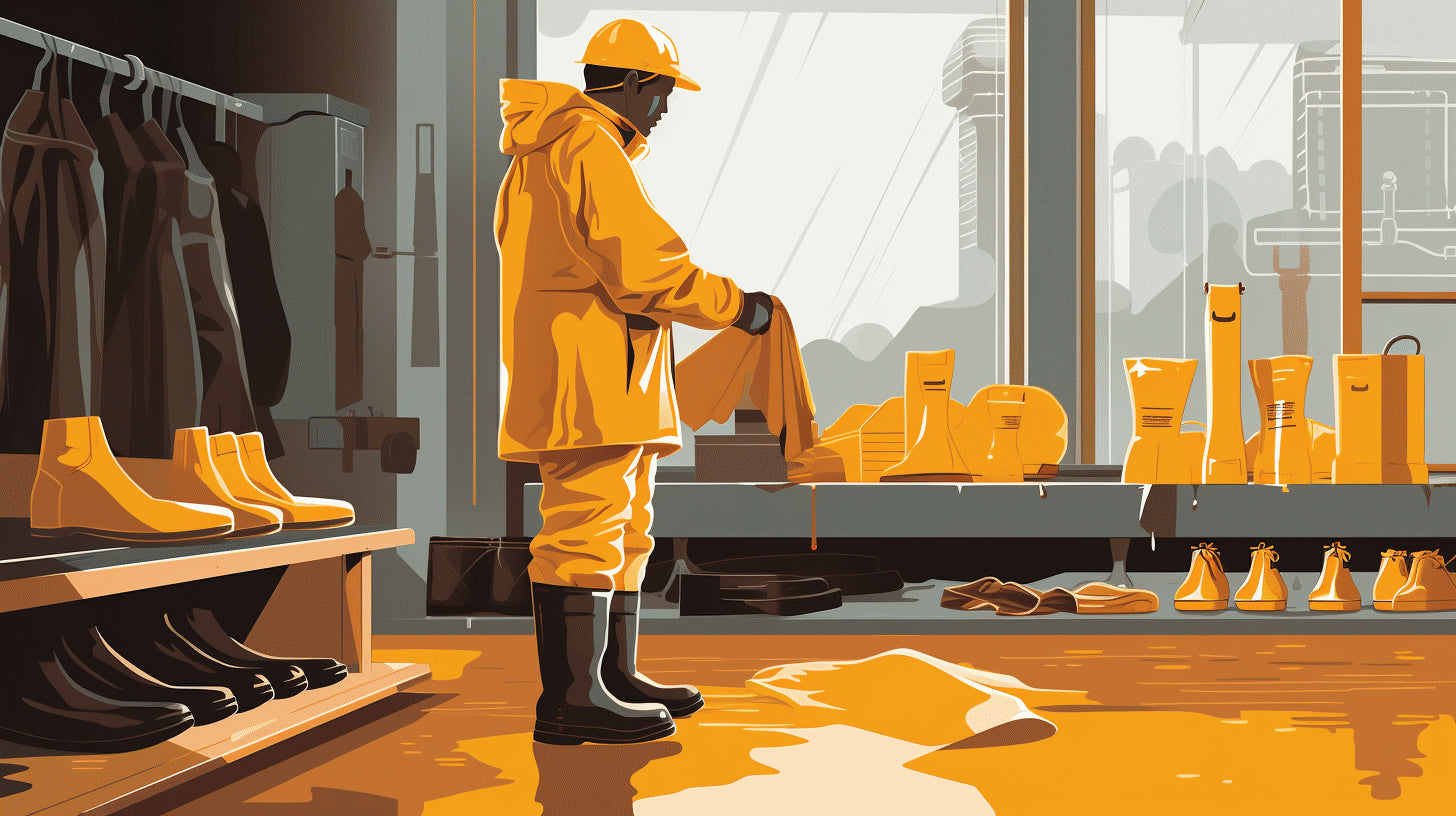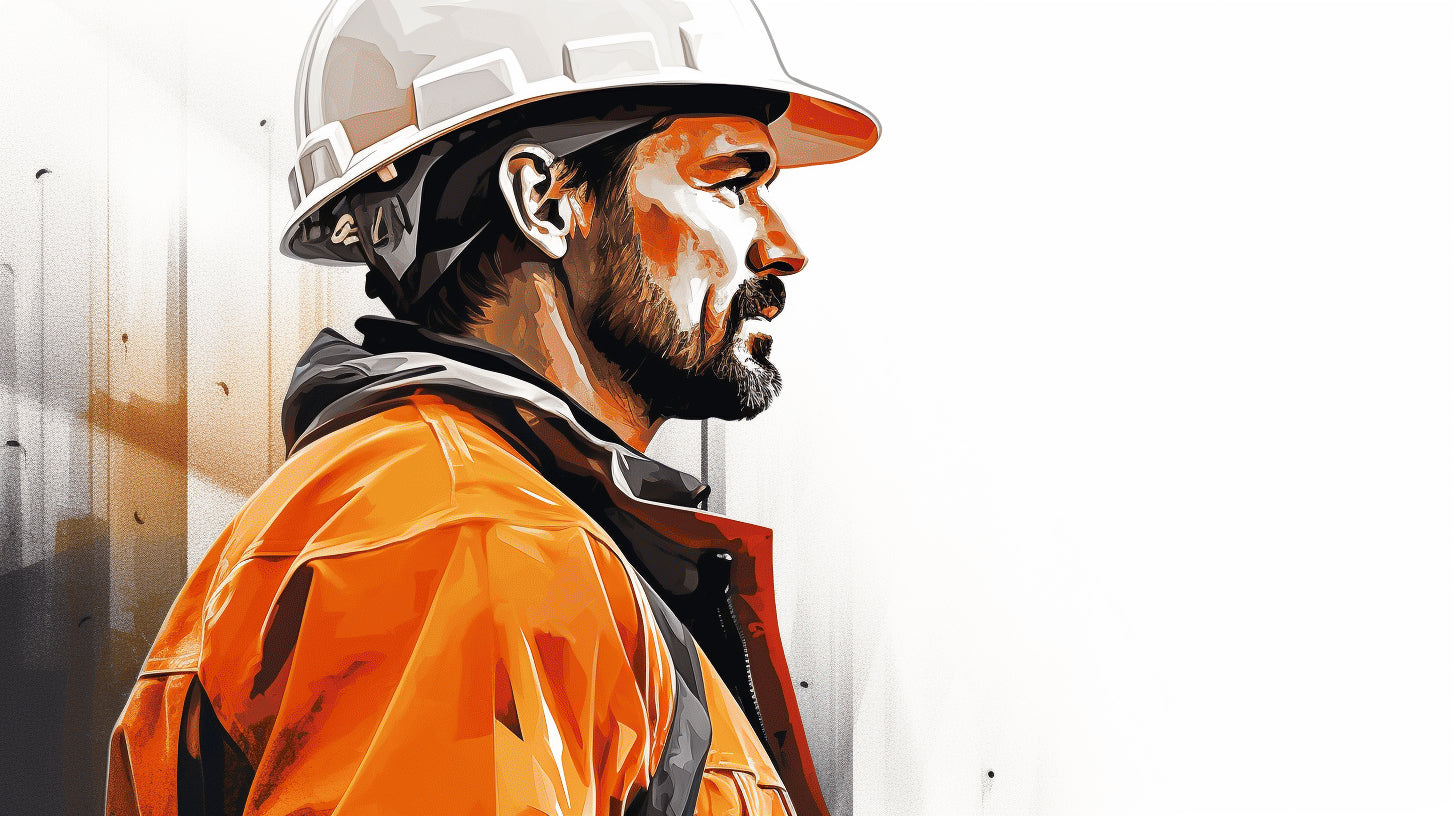Construction sites, especially during the rainy season, become difficult places to work at. Rain, sleet, and even the occasional snowfall can make for a dangerous working environment. It's not just about getting wet and feeling uncomfortable; water can damage tools, make surfaces slippery, and reduce visibility. But don't worry, you're not powerless against mother nature! Equipping yourself with the right gear can help combat the elements and keep you safe. In this article, we'll delve into essential rain gear maintenance tips that every construction worker should know. We will cover everything from choosing the right rain gear, managing safety measures heavy rainfall, to cleaning and maintaining your gear. So, whether you're an experienced hand or a newbie on the job, this guide will help you understand and overcome the challenges the rain brings. So sit tight, grab your mugs, and get ready for some insightful tips on how to protect yourself and your equipment from the rain.
Choosing the right rain gear proves essential for anyone braving the elements, especially those whose work requires them to do so. Yet, even as simple as it may sound, selecting the perfect waterproof outfit can sometimes baffle even the savviest shopper. This confusion is due to the various factors to consider such as safety standards, work environment conditions, and quality of the gear. This section navigates these factors to ensure the right rain gear is chosen to offer efficient protection when it matters most.
Compliance with ANSI Standards
First off, it's important to consider the American National Standards Institute (ANSI) ratings. ANSI sets standard safety guidelines for all sorts of work gear, including rainwear. For certain occupations, rainwear must meet specific ANSI standards. For example, road maintenance workers may require ANSI 2 or ANSI 3 level rainwear for compliance. This not only ensures the rain gear is of a certain durability level but also guarantees enhanced visibility for the workers in hazardous and low-visibility environments. Remember, safety should always be paramount in your rain gear selection process.
Consider Work Environment
The second factor to consider is the specific nature of your work environment. Certain jobs fare better with specific types of rain gear. Construction workers, for instance, require rugged rainwear capable of enduring heavy-duty wear and tear without affecting mobility or comfort. The right gear will depend on the nature of the environment, its level of exposure to the elements, and the risk to personal safety. Therefore, it's crucial to bear in mind what environment the rainwear will be used in before making a purchase.
Quality and Ventilation
Lastly, it is imperative not to overlook the quality of the gear and the ventilation it offers. High-quality rainwear is often equipped with important features like taped seams and waterproof zippers that enhance durability and ensure complete water protection. Ventilation, on the other hand, becomes indispensable for those needing to wear their rain gear for long periods. In cold and wet environments, breathability is essential not just for comfort but for health reasons as well.
When it comes to choosing the right rain gear, key factors such as compliance with ANSI standards, the specific work environment, and the quality and ventilation the gear offers must be taken into account. In sum, understanding these factors ensures selection of rain gear that not only keeps you dry but also safe and comfortable in your work environment.
Regardless of the size or scope of the project, safety must always be a priority at construction sites. Ensuring the welfare and protection of workers calls for clear guidelines and practices, such as controlling traffic in work zones and preventing cold stress among outdoor workers. Now, we'll turn our attention to each of these vital areas in turn.
Traffic Control Guidelines
Navigating traffic within construction zones, particularly on highways, can prove challenging for both workers and motorists. Therefore, proper traffic control guidelines, especially in highway construction and maintenance work zones, are crucial for everybody's safety.
- Highly visible devices for traffic control like cones, barricades, and barriers are indispensable.
- Clear, readable signs should be placed well in advance of the site to give drivers adequate warning.
- Communication should be ramped up between workers on the ground and machinery operators to avoid untoward incidents.
- It goes without saying that the work zone should be amply lit, especially when work is carried on in low-visibility conditions.
With thorough strategies and a watchful eye on traffic patterns, construction sites can substantially minimize disruptions and enhance overall safety.
Cold Stress Prevention
Furthermore, protection measures at construction sites extend to working in severe weather conditions, chiefly cold stress prevention. Throughout winter or in cold climates, outdoor construction workers are subjected to freezing temperatures, wind, and dampness, making them prone to cold stress and its accompanying hazards.
- Layering clothing is one of the primary defenses against cold weather. Not only does it provide insulation, but it also allows flexibility in adjusting to fluctuating temperatures.
- Body parts like the ears, face, hands, and feet that may be directly exposed to the cold need special protection such as earmuffs, thermal gloves, and insulated boots.
- Limiting exposure times, scheduling frequent breaks indoors, and offering warm, sweetened liquids can go a long way towards boosting the body's resistance.
Thus, by understanding and implementing these protective measures, we can safeguard our frontline employees and ensure their health and productivity remains unimpaired.
Remember, a well-protected construction worker is not just a safer one, but a more effective one too. For every construction site, these protective measures aren't just recommendations, they're necessities.
Rain gear is an essential item in your closet, especially for those stormy days when leaving home is inevitable. Crafting a care routine for this crucial attire can dramatically extend its durability, enhance its performance, and ensure it's ready-to-go whenever you need it.
One of the primary sections of this routine revolves around cleaning your rain gear. Believe it or not, dirt, body oils, sweat, and even some soap residues can all inhibit the functionality of this important clothing. Being vigilant about care can make all the difference. Let's unravel how to best care for your rain gear!
Machine Laundering
The first essential topic during our deep dive into rain gear maintenance relates to machine laundering. Your washing machine can be your rain gear's best friend if you respect some key rules. Just remember to machine launder rain gear carefully and avoid washing garments with a rough finish together. Setting your washer to a gentle cycle can show your jacket some love, ensuring it keeps you dry and warm on the dampest of days.
Avoid Washing Powders and Fabric Conditioners
Wash your rain gear with care. Saying no to washing powders and fabric conditioners will make your rain gear happy. The harsh chemicals contained in those cleaning agents can compromise the integrity of your gear's waterproofing properties, meaning it might not perform as well as you’d expect during the next downpour.
Waterproofing and Sealed Seams
Maintaining the waterproofing abilities of your rain gear is as essential as keeping it clean. Regular cleaning and maintenance, including washing and re-waterproofing, are crucial for optimum rain gear performance. Regularly ventilating your rainwear also helps to speed up sweat evaporation and keep you comfortable even under the heavy rain. Remember, a rain jacket that can't keep you dry is merely a jacket.
Repairing Cuts and Tears
One last critical tip is about mending the inevitable. Dealing with cuts and tears don't mean bidding farewell to your favorite gear. On the contrary, repairing cuts or tears in rain gear can be successfully accomplished using nylon repair tape. This simple solution can restore your gear's functionality and extend its lifespan, while also staring waste down.
In essence, some thoughtful care can breathe prolonged life into your rain gear and significantly better your wet-weather experience. Commence your cleaning and maintenance schedule today, and unlock lasting protection from the rain!
A high-quality rain jacket can take a beating from the elements, be it wind, rain, or an unexpected storm. However, it's not invincible, and with frequent use, it can start to lose its water repellency. You can prevent this and extend the lifespan of your rain gear by following proper care instructions and shopping smartly for rain gear maintenance products.
Manufacturer's Care Instructions
Heeding the manufacturer's instructions goes a long way in preserving the lifespan and performance of your gear. Manufacturers know their products best, which is why they provide specific care instructions. These may involve general cleaning guidelines, recommended detergents, or temperature settings for washing and drying. While one-size-fits-all care tips can be useful, it's always best to refer back to the manufacturer's advice, which is tailor-made for your specific rain jacket.
Tech Wash and DWR Coating
Over time, dirt and oils can compromise the water repellency of a rain jacket. In removing these, regular household detergents are often too harsh and can leave residues that interfere with a jacket's water-resistant performance. Instead, consider using products specifically designed for technical outerwear, such as Tech Wash. This can clean your gear without damaging its water repellent property.
To restore its water resistance, consider reapplying Durable Water Repellent (DWR) coating, which is typically applied to rain gear during production. While the process might sound complicated, it can be as simple as spraying it on and letting it dry.
Regular Washing and Coating Reapplication
While it's not necessary to wash your rain jacket after every use, regular cleaning and DWR reapplication should be part of your maintenance routine. Excessive dirt reduces water repellency and can make the jacket feel heavier. Clean your gear regularly to maintain optimal performance, and consider reapplying the DWR coating once you notice water soaking into the fabric instead of beading off.
Proper Storage and Shopping
The way you store your rain gear can also impact its durability. Avoid packing it away while it’s still wet or dirty, as this can promote mildew growth and cause unpleasant odors. Also, avoid hanging it in direct sunlight for extended periods as UV rays can degrade the fabric and the DWR coating.
Additionally, part of maintaining your rain gear involves shopping smartly. Invest in quality maintenance products and consider opting for jackets with lifetime warranties, as this speaks volumes about the manufacturer's confidence in the product’s long-lasting performance. It might mean shelling out a few more dollars initially, but in the long run, it’s a cost-effective measure that ensures you make the most out of your rain gear.
The underpinning idea is simple– the better care you take of your rain gear, the longer it's likely to serve you well. By following proper care instructions, using suitable cleaning and coating products, incorporating a regular maintenance routine, and shopping smartly, you can maximize the lifespan and performance of your rain gear. So don’t despair the next time you're caught in a downpour– with these tips, you'll be ready to take whatever Mother Nature throws at you!
While it's true that bad weather can't be prevented, with the right rain gear and protective measures, its effects can be mitigated. Construction workers highly value their construction site safety, and a significant component of this involves investing in quality rain gear and maintaining it properly. Donning ANSI-compliant rain gear that suits the work environment not only fulfills safety standards but also enhances comfort and productivity.
Moreover, understanding and implementing traffic control guidelines and cold stress prevention methods in construction sites can further enhance safety and work efficiency. However, it's not just about accessing the right gear and safety knowledge, but also about keeping them in tip-top shape. Hence, following appropriate cleaning, maintenance procedures and adhering to manufacturer's care instructions are crucial aspects of gear longevity.
An essential aspect of this maintenance includes regular washing, machine laundering being one of the most effective methods. However, it's worth noting that certain cleaning substances, such as washing powders and fabric conditioners, ought to be avoided. They could harm the gear's waterproofing and sealed seams. Speaking of which, maintaining the gear's waterproofing and repairing any cuts or tears, when necessary is vital.
Additionally, reapplying tech wash and Durable Water Repellent (DWR) coating, as well as storing the gear properly significantly aids to its durability. Investing time and effort into these practices can make the difference between a gear that merely gets the job done and one that makes the job easier and safer. Always remember, protection is only as good as the care we accord it.
Frequently Asked Questions
-
How often should I clean my rain gear?
It is recommended to clean your rain gear after every use to remove dirt, debris, and any potential contaminants that may have accumulated.
-
What is the best way to clean rain gear?
The best way to clean rain gear is to follow the manufacturer's instructions. In most cases, you can hand wash the gear using mild detergent, rinse thoroughly, and let it air dry. Avoid using harsh chemicals or machine washing unless specified by the manufacturer.
-
How can I maintain the waterproof properties of my rain gear?
To maintain the waterproof properties of your rain gear, you can periodically apply a durable water repellent (DWR) coating. Follow the manufacturer's instructions for the specific product you are using.
-
Should I store my rain gear in a specific way?
When storing rain gear, make sure it is completely dry to prevent the growth of mold and mildew. Hang the gear or lay it flat in a cool and dry place, away from direct sunlight or heat sources. Avoid folding or compressing the gear for extended periods.
-
What should I do if my rain gear gets damaged?
If your rain gear gets damaged, it is recommended to follow the repair instructions provided by the manufacturer. In case of significant damage or wear, consider replacing the gear to ensure continued protection.























Leave a comment
This site is protected by hCaptcha and the hCaptcha Privacy Policy and Terms of Service apply.